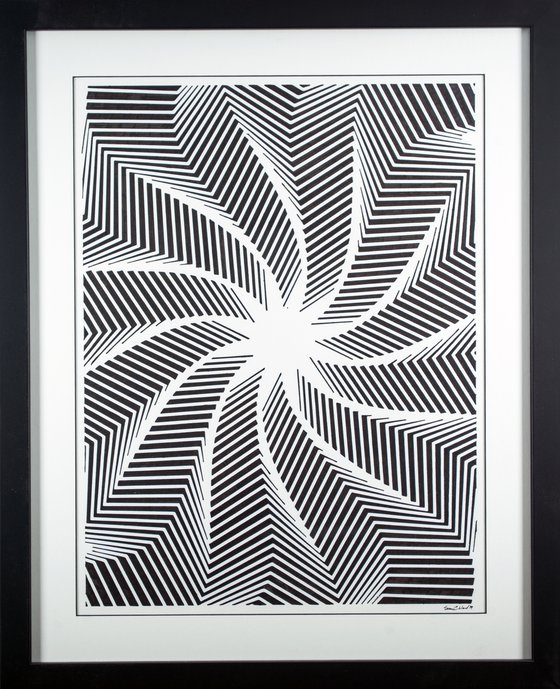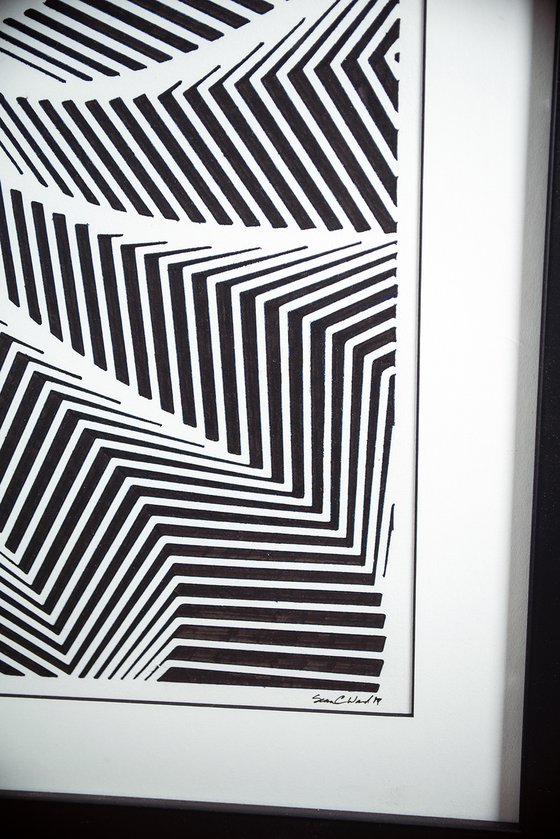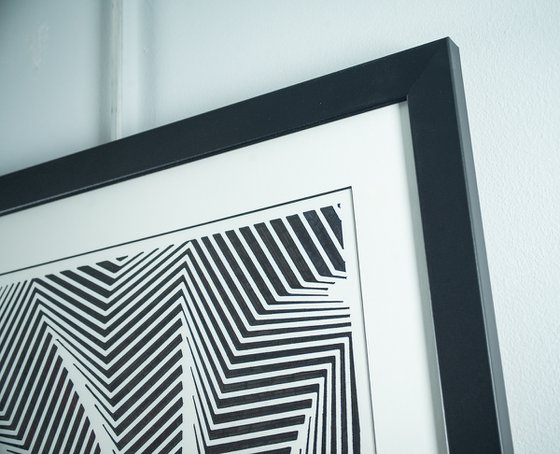- By medium
- By subject
- By budget
- Sales
- Gift cards
- Discover all art
- Artists
- Editors’ picks
- Ideas
Original artwork description:
“Chromatic Hallucinations” is a body of work that focuses on the ideals of pattern. It can represent many different things throughout humanity. The people, the beliefs they follow, the natural world around you, the history of subjects and the traditions that have been followed. Different colors and shapes vary meanings throughout different cultures, but the idea is carried down from generation to generation. From birth to death, pattern is a part of everyday life and cultural practice. The drive to recognize and form patterns can be from a glimpse into curiosity, discovery of new ideas and experimentation through everyday life. Da Vinci found this “Way of Stimulating and Arousing the Mind to Various Inventions” so invaluable that he applied it not only visually, as a means of inventing landscape or battle scenes, but in musical matters as well. The more patterns we can recognize, the wider our imaginative and creative scope. There is a revolution in the science of design under way, and most people, including designers, aren’t even aware it is taking place. Color, for example, was just researched to find that simply glancing at shades of green can boost creativity and motivation. It is easy to assume that there is correlation between verdant colors and vegetation capable of bearing food, which would mentally trigger the thought of nourishment. There is a science between window views of landscapes aiding in patient recovery, learning in classrooms and expanding productivity in the workplace. Additionally, certain patterns also have a universal appeal. Humanity responds dramatically to balanced pattern so much so that it has been researched to reduce stress levels by as much as 60 percent, just by being the field of vision of the viewer.
Materials used:
Ink and Marker
Tags:
#black and #contemporary #pattern #minimal #minimalism #hand drawn #ink on #op art #trippy #optical illusionBuilding to the Sun (2019) Ink drawing
by Sean Christopher Ward
6 Artist Reviews
£528.96
- Ink drawing on Paper
- One of a kind artwork
- Size: 58.42 x 71.12 x 2.54cm (framed) / 43.18 x 58.42cm (actual image size)
- This artwork is sold framed
- Signed on the front
- Style: Geometric
- Subject: Abstract and non-figurative
Loading
Original artwork description
“Chromatic Hallucinations” is a body of work that focuses on the ideals of pattern. It can represent many different things throughout humanity. The people, the beliefs they follow, the natural world around you, the history of subjects and the traditions that have been followed. Different colors and shapes vary meanings throughout different cultures, but the idea is carried down from generation to generation. From birth to death, pattern is a part of everyday life and cultural practice. The drive to recognize and form patterns can be from a glimpse into curiosity, discovery of new ideas and experimentation through everyday life. Da Vinci found this “Way of Stimulating and Arousing the Mind to Various Inventions” so invaluable that he applied it not only visually, as a means of inventing landscape or battle scenes, but in musical matters as well. The more patterns we can recognize, the wider our imaginative and creative scope. There is a revolution in the science of design under way, and most people, including designers, aren’t even aware it is taking place. Color, for example, was just researched to find that simply glancing at shades of green can boost creativity and motivation. It is easy to assume that there is correlation between verdant colors and vegetation capable of bearing food, which would mentally trigger the thought of nourishment. There is a science between window views of landscapes aiding in patient recovery, learning in classrooms and expanding productivity in the workplace. Additionally, certain patterns also have a universal appeal. Humanity responds dramatically to balanced pattern so much so that it has been researched to reduce stress levels by as much as 60 percent, just by being the field of vision of the viewer.
Materials used:
Ink and Marker
Tags:
#black and #contemporary #pattern #minimal #minimalism #hand drawn #ink on #op art #trippy #optical illusion14 day money back guaranteeLearn more



